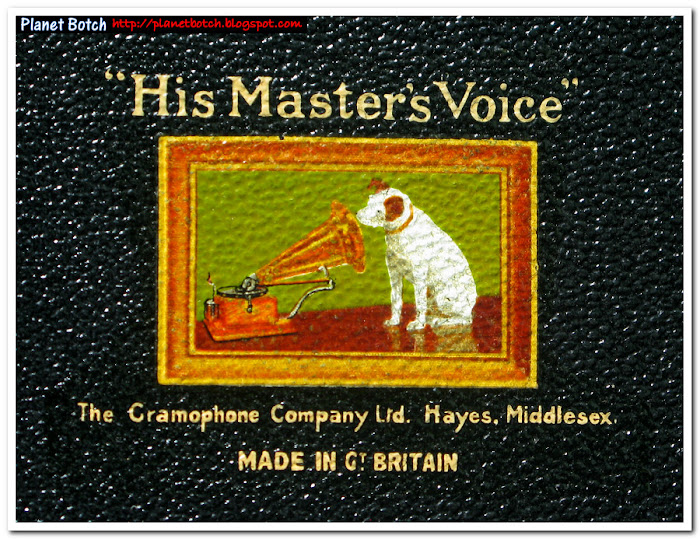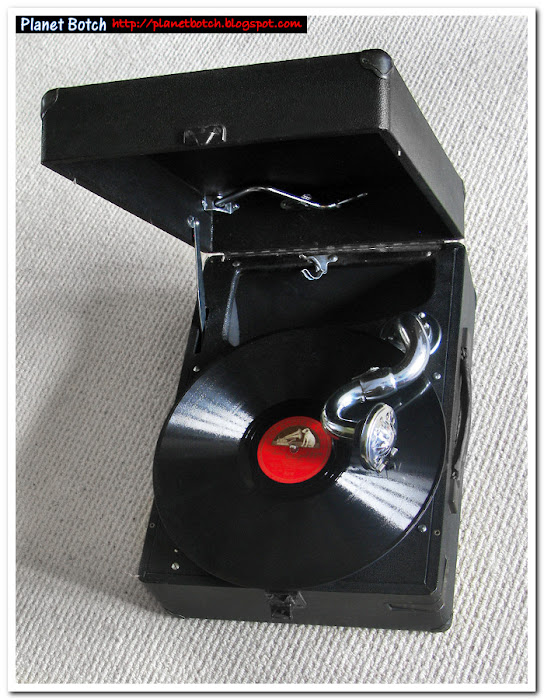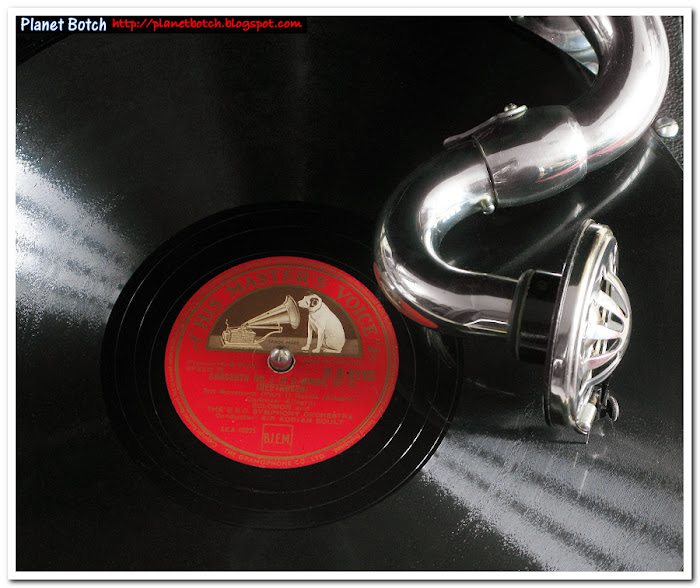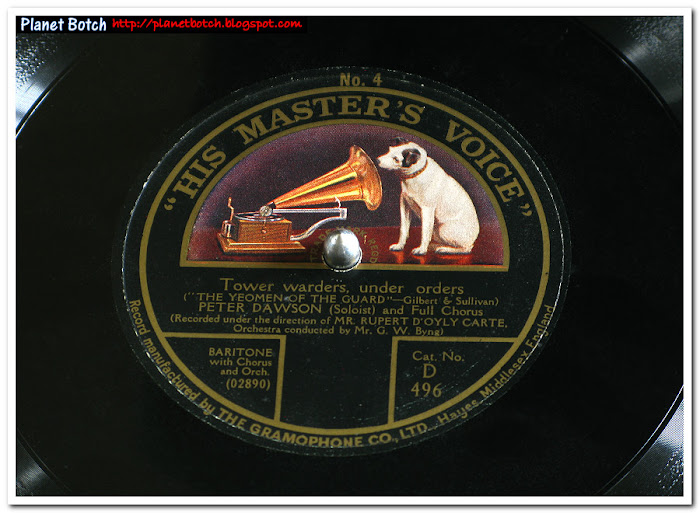
The branding on the underside of the case lid of my newly discovered HMV Model 102 Gramophone.
I presume the gramophone belonged to my Grandfather, who had a great interest in classically-orientated music. He was an amateur singer, who performed on stage in productions such as The Mikado when he was young. It appears that the gramophone is a His Master’s Voice Model 102, made in the 1930s. It’s in the standard colour of black, but the condition is very impressive, and the device still works perfectly. It’s actually quite unnerving opening up the case, finding an old record player, and then just as you’re wondering where the plug socket is, you flick a lever and the turntable starts to revolve – fast!… No electricity, no power source - it’s like magic!

The HMV Model 102 Gramophone playing one of the accompanying 78rpm records.
In fact, these were fully mechanical wind-up devices, and how well-made they must have been to still be functioning without hitch between 70 and 80 years after emerging from the factory. Can you imagine any of today’s new entertainment devices still going strong in or around the year 2090? No, me neither. I think what really cements the magnitude of this find for me is the world into which the product was born. This gramophone was built in an era even before Winston Churchill became Prime Minister. An era before World War II. If you look through Bing/Google images at what the motor vehicles of the 1930s were like – the old steam trains, the aeroplanes, the attire, etc… you really do start to get a sense of how ancient this thing is. And yet here it is in 2012, doing exactly what it did when it was new. Amazing.
All records play at a speed of 78rpm, and other than a very slight pitch variation control, there are no other settings. There’s a brake which stops the turntable revolving, and that’s pretty much it. The wind-up handle inserts just beneath the right hand side of the turntable, and you feel a reassuring resistance as you increase the tension in the mechanism. You then start the turntable, plonk on a record, drop the rather lethal looking stylus onto the edge of the record, the chamber above the stylus amplifies the vibration, and you get music. You do get a hell of a lot of crackling too, but the music comes out on top.

A closer look at the gramophone in action. The chamber above the stylus (needle) amplifies the vibration and renders the information in the grooves of the record as very clearly audible music. The chamber looks small, but it's not quiet.
Of course, the sound you hear when playing gramophone records on this wind-up player is certainly not what we’d regard today as lifelike. The tone is very middly indeed. There’s no bass as all, and little in the way of high frequency definition. It’s a classic ‘telephone’ sound, but it’s much louder. In fact, it’s surprising the amount of volume you get from a setup without any sort of substantial looking speaker.
My next task will be to investigate the records a little further. They don’t have the year of recording labelled onto them, so there's some detective work to do. I did make a start with a record I specifically photographed for this piece (shown below), and I was able to hit the nail on the head with that one, so to speak. I've established a precise recording date of 18th March 1920, thanks to this highly informative article on a Gilbert and Sullivan discography site. In less than eight years, that recording will reach the age of a hundred.

Recorded on Thursday 18th March 1920, the music on this gramophone record is only a year and a bit removed from World War I. Beautiful label, too.
But this is a brand new discovery for me, so there's still plenty to explore. It really has been like finding my very own museum. My Grandfather died over two decades ago, so he'll know nothing of this strange concept of taking digital photos and sending them out to the world. But thanks, Grandad. You've given me another very memorable day.

